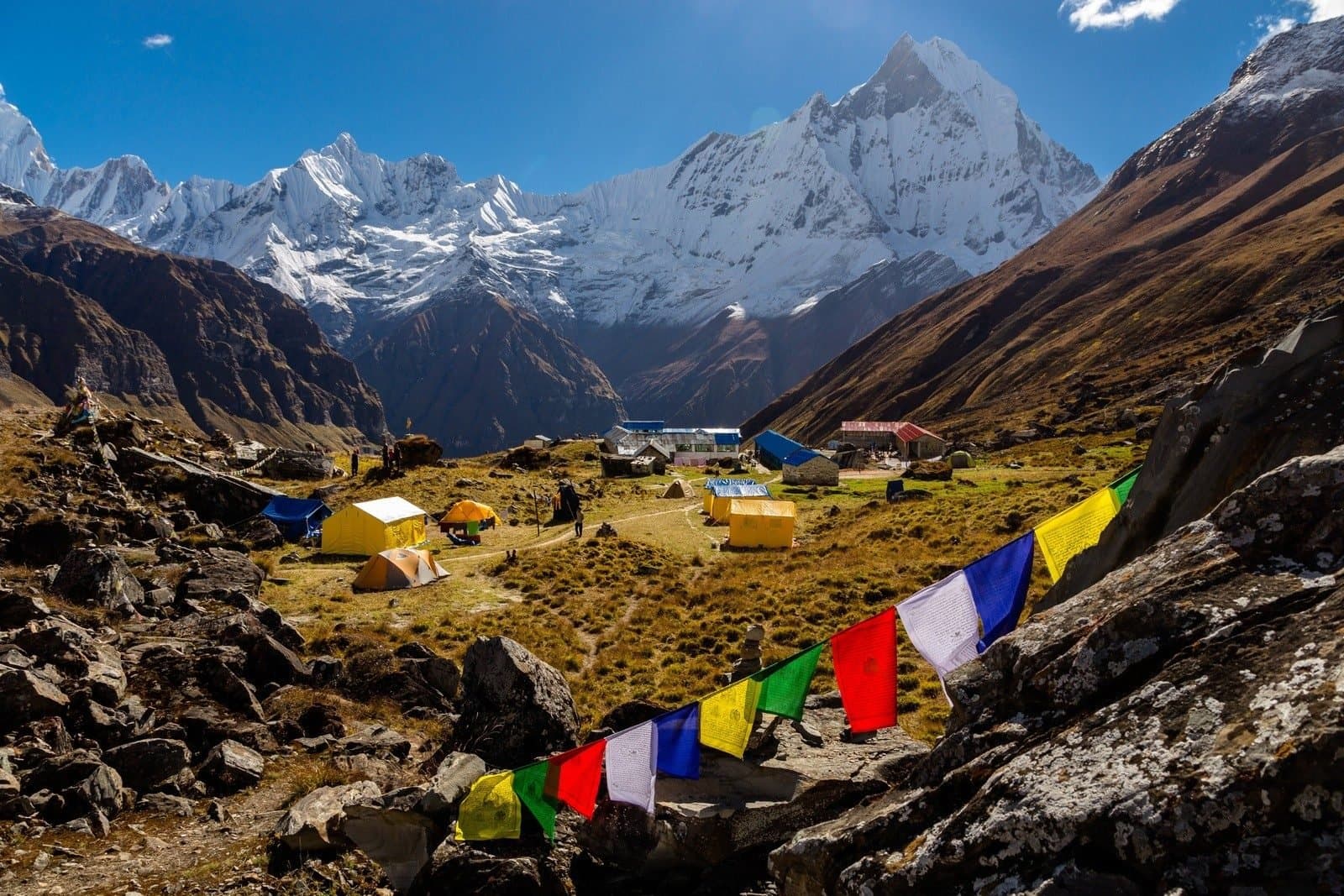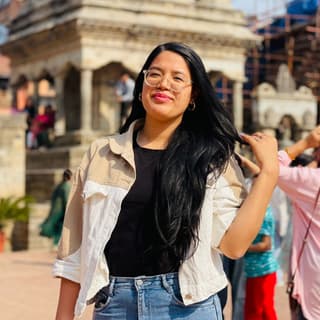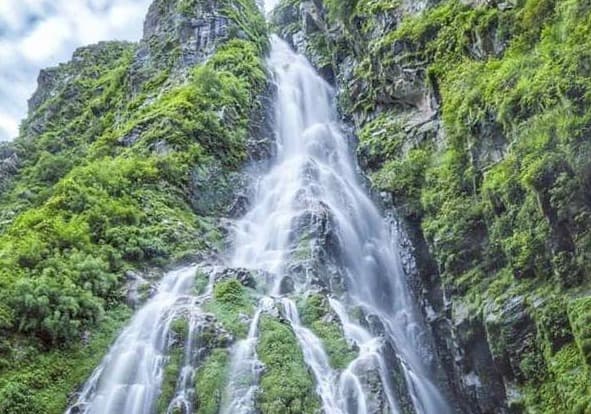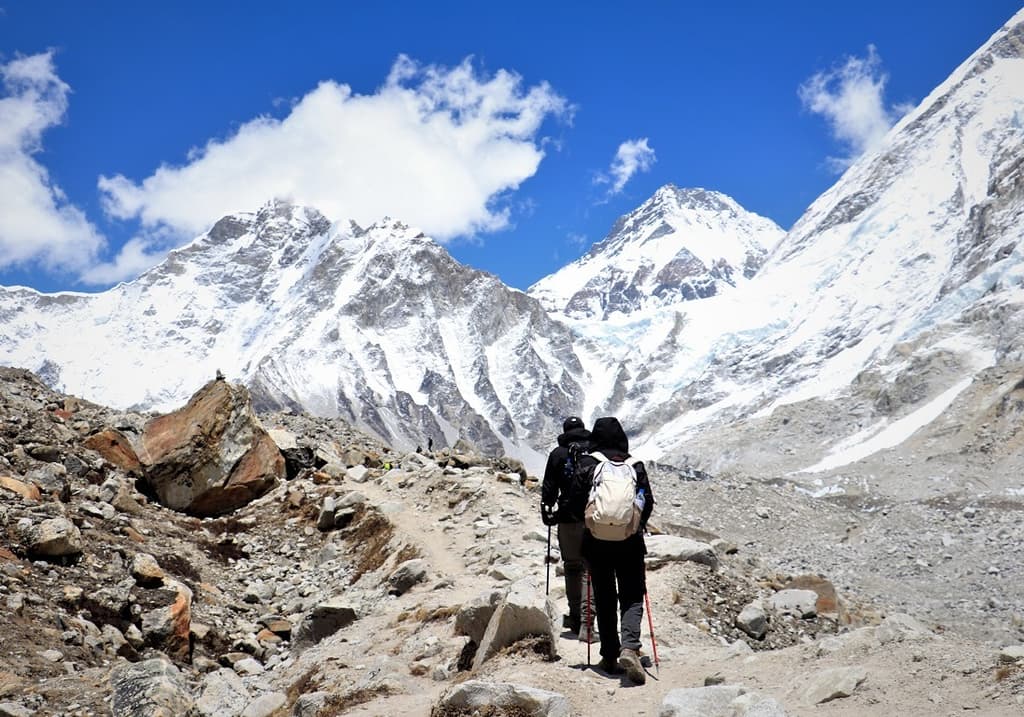A Complete Guide for Trekking in Nepal
Nepal's towering peaks and ancient trails call to adventurers worldwide, and we at Luxury Holiday Nepal have guided thousands through this Himalayan paradise. This complete trekking guide serves adventure seekers, outdoor enthusiasts, and anyone dreaming of walking among the world's highest mountains.
We've spent years perfecting trekking experiences across Nepal's diverse terrain, from the famous Everest Base Camp to hidden gems in remote valleys. Our expertise helps both first-time trekkers and seasoned mountaineers navigate everything from permit requirements to high-altitude challenges.
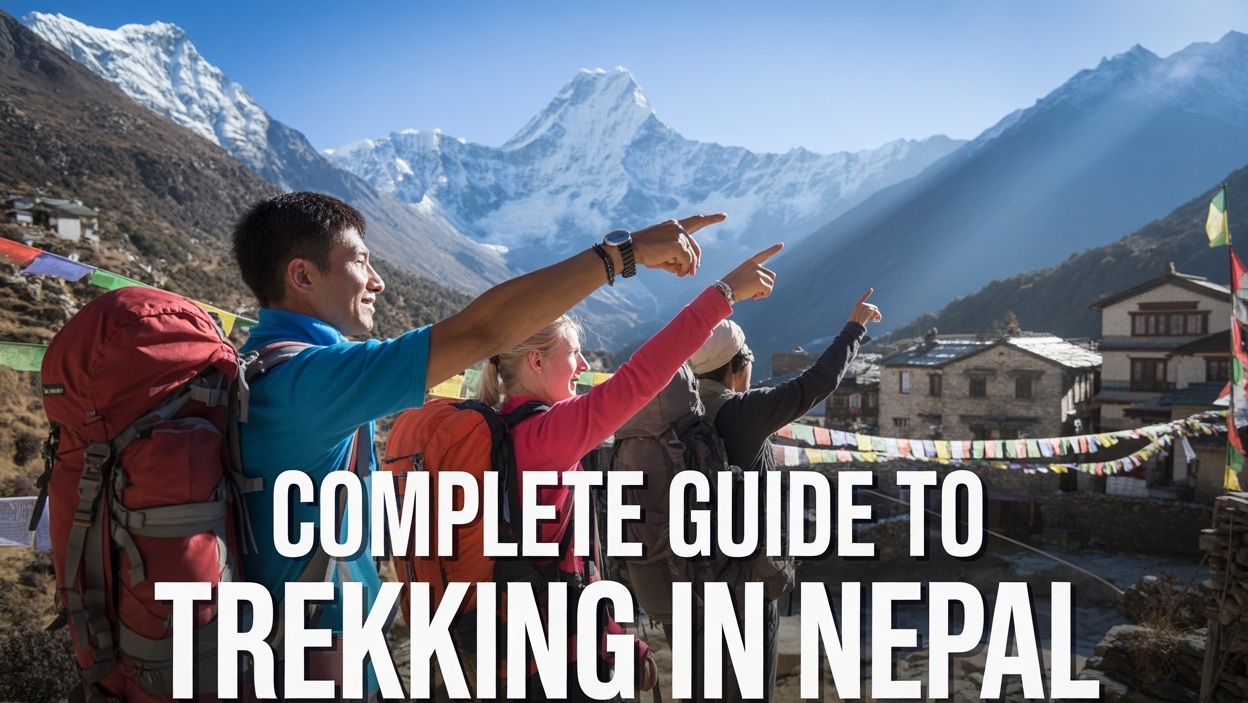
In this comprehensive guide, we'll walk you through essential planning and preparation strategies that can make or break your Nepal adventure. We'll also explore the top trekking routes and destinations, sharing insider knowledge about what makes each trail special. Plus, we'll cover our proven fitness preparation and training strategies that help trekkers tackle demanding mountain paths with confidence.
Nepal's trekking landscape offers something for every skill level and timeline. We've designed this guide to give you the practical knowledge and cultural insights needed to create an unforgettable Himalayan journey.
Essential Planning and Preparation for Your Nepal Trek
Choosing the Perfect Trekking Season for Maximum Enjoyment
Nepal's trekking seasons can make or break your Himalayan adventure. We've guided countless trekkers through Nepal's diverse seasons, and timing really matters for your safety, comfort, and overall experience.
Spring (March-May) stands out as our favorite season for most trekkers. The weather stays stable, rhododendrons bloom across the mountainsides, and visibility remains excellent for mountain views. Temperatures hover between comfortable ranges, making this peak season for good reason. We see the trails busier during these months, but the spectacular scenery justifies the crowds.
Autumn (September-November) offers another prime window for trekking. Post-monsoon clarity provides stunning mountain vistas, and the weather remains dry and stable. We particularly love this season for high-altitude treks like Everest Base Camp, where crystal-clear skies reveal the peaks in all their glory.
Winter (December-February) presents unique opportunities for lower-altitude treks. While high passes become challenging due to snow, regions like Ghorepani Poon Hill or Annapurna Base Camp remain accessible. We appreciate the solitude and dramatic snow-capped landscapes, though warm gear becomes essential.
Monsoon season (June-August) deserves special consideration. While most trekkers avoid these months, we've discovered hidden gems like the Mustang region, which lies in the rain shadow and stays relatively dry. The landscapes turn lush and green, though leeches and muddy trails require extra preparation.
Obtaining Required Permits and Documentation Hassle-Free
Navigating Nepal's permit system doesn't have to overwhelm you. We've streamlined this process for our clients over the years, and we'll share the insider knowledge that makes permit acquisition straightforward.
TIMS (Trekkers' Information Management System) Cards form the foundation of trekking documentation. We always secure these for our groups, as they're mandatory for most trekking routes. The card costs vary between individual and group rates, and we recommend getting them through authorized agencies to avoid complications.
National Park Entry Permits are required for treks entering protected areas. Each park has different fees and requirements:
|
Protected Area |
Permit Fee (SAARC) |
Permit Fee (Other) |
|
Sagarmatha National Park |
NPR 1,500 |
NPR 3,000 |
|
Annapurna Conservation Area |
NPR 1,000 |
NPR 3,000 |
|
Langtang National Park |
NPR 1,500 |
NPR 3,000 |
Restricted Area Permits (RAP) apply to special regions like Upper Mustang, Manaslu, or Tsum Valley. We handle these applications well in advance since they require more documentation and higher fees. The minimum group requirement and guide mandate make these permits more complex.
We always advise carrying multiple passport photos and photocopies of important documents. Digital backups stored securely online have saved our clients from permit headaches when original documents get damaged or lost. Our team handles all permit applications for our luxury packages, but understanding the process helps you track everything properly.
Selecting the Right Trek Difficulty Level for Your Fitness
Matching your fitness level to the right trek prevents disappointment and ensures safety. We've seen trekkers overestimate their abilities and struggle, while others undersell themselves and miss out on incredible experiences.
Easy/Beginner Treks suit first-time trekkers or those with moderate fitness levels. Routes like Ghorepani Poon Hill or short Everest View treks require basic cardiovascular fitness and can be completed by most people with minimal training. We typically see daily walking times of 4-6 hours at moderate altitudes below 4,000 meters.
Moderate Treks demand good fitness levels and some hiking experience. Annapurna Base Camp, Everest Base Camp, or Langtang Valley treks fall into this category. Daily walks extend to 6-8 hours, with significant altitude gains and challenging terrain. We recommend at least 3 months of regular cardio training before attempting these routes.
Challenging/Advanced Treks are for experienced trekkers with excellent fitness. Three Passes Trek, Manaslu Circuit, or Island Peak climbing require serious preparation and mental toughness. Daily walking can exceed 8 hours with technical sections and high-altitude challenges above 5,000 meters.
We always conduct fitness assessments during our pre-trek briefings. Your resting heart rate, previous hiking experience, and comfort with altitude all factor into our recommendations. Age isn't necessarily a barrier - we've guided 70-year-olds on Everest Base Camp and seen 25-year-olds struggle on moderate treks due to poor preparation.
Budgeting and Cost Planning for a Luxury Trekking Experience
Creating a realistic budget for luxury trekking in Nepal requires understanding the various cost components and quality differences. We've developed comprehensive pricing models that deliver exceptional value while maintaining the highest standards.
Package Costs for luxury treks start around $2,500-4,000 for popular routes like Everest Base Camp or Annapurna Base Camp. These packages include premium accommodations, experienced guides, porters, all meals, and permits. Upper Mustang or Manaslu luxury treks range from $3,500-6,000 due to restricted area requirements and remote locations.
Accommodation Upgrades significantly impact your budget but transform the experience. We partner with the finest lodges and hotels available on each route:
-
Standard Tea Houses: $10-20 per night
-
Premium Lodges: $50-150 per night
-
Luxury Mountain Lodges: $200-500 per night
Additional Costs often surprise first-time luxury trekkers. International flights to Kathmandu ($800-2,000), domestic flights ($150-400), equipment purchases or rentals ($200-800), and tips for guides and porters ($150-300) add substantial amounts to your base package cost.
Travel Insurance specifically covering high-altitude trekking costs $100-300 but remains absolutely essential. We require comprehensive coverage including helicopter evacuation, which can cost $5,000-15,000 without insurance.
Our luxury packages include contingency funds for weather delays, extra nights, and emergency situations. We typically recommend budgeting an additional 20-30% above your base package cost for unexpected expenses, souvenirs, and personal items. This approach ensures you can fully enjoy the experience without constant budget worries.
Top Trekking Routes and Destinations in Nepal
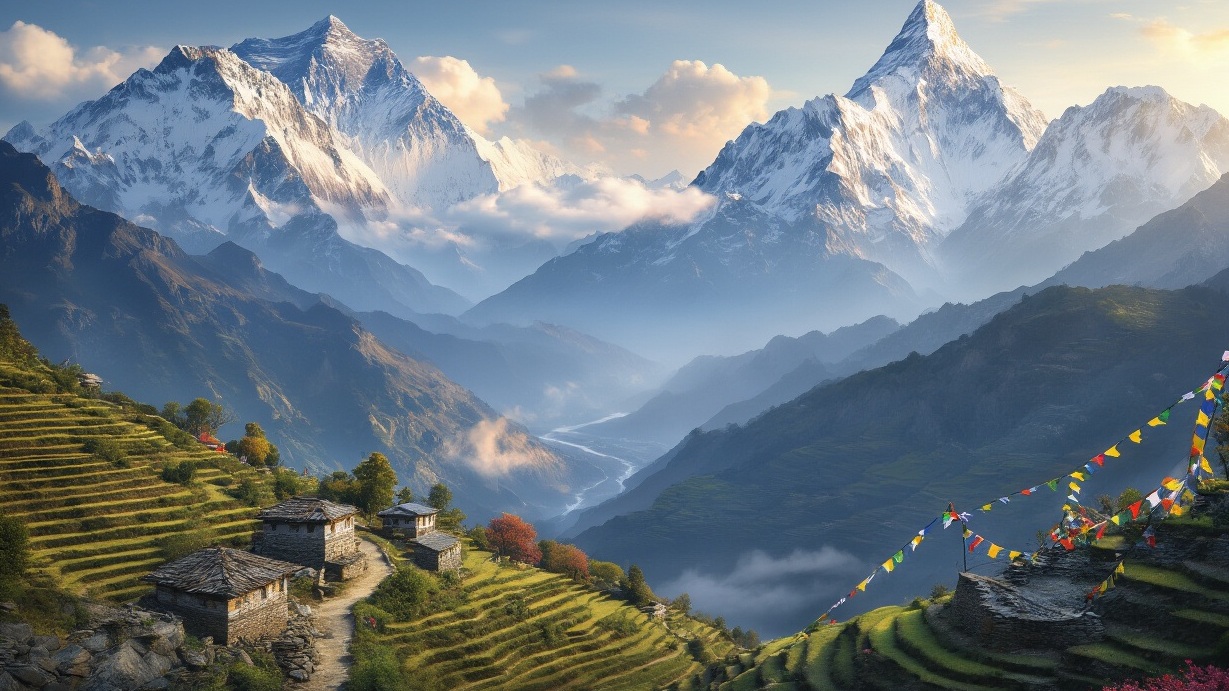
Everest Base Camp Trek - The Ultimate Mountain Adventure
We've guided countless adventurers through what many consider the holy grail of trekking experiences. The Everest Base Camp trek offers you the chance to walk in the footsteps of legendary mountaineers while experiencing the raw power of the world's tallest peak. Our 12-14 day journey takes you through the heart of the Khumbu region, where Sherpa culture thrives alongside dramatic mountain landscapes.
Starting from Lukla's thrilling airport landing, we'll lead you through ancient rhododendron forests, across suspension bridges that span deep valleys, and up to altitudes where the air grows thin but the views become absolutely breathtaking. You'll pass through vibrant Sherpa villages like Namche Bazaar, the region's commercial hub, and Tengboche, home to the famous monastery where monks bless trekkers on their journey.
We recommend planning for proper acclimatization days, as the trek reaches 5,364 meters at Base Camp. The route offers stunning views of Everest, Lhotse, Nuptse, and Ama Dablam, creating photo opportunities that will leave your friends speechless. Weather windows are crucial - we typically recommend March to May and September to November for the clearest mountain views and most stable conditions.
Our teams ensure you experience authentic Sherpa hospitality in traditional teahouses while maintaining safety protocols essential for high-altitude trekking. The sense of accomplishment you'll feel standing at Everest Base Camp, surrounded by prayer flags fluttering in the Himalayan wind, makes every challenging step worthwhile.
Annapurna Circuit and Base Camp - Diverse Landscapes and Culture
We love sharing the Annapurna region because it showcases Nepal's incredible diversity in one remarkable trek. The classic Annapurna Circuit spans 15-20 days and takes you around the entire Annapurna massif, crossing the challenging Thorong La Pass at 5,416 meters. We've watched trekkers transform as they journey from lush subtropical forests through alpine meadows to high-altitude desert landscapes that feel like stepping onto another planet.
Our routes typically start in Besisahar or Manang, depending on your time constraints and fitness level. We particularly enjoy the cultural richness you'll encounter - Hindu villages in the lower elevations gradually give way to Tibetan Buddhist communities as you gain altitude. The gompa at Manang and the ancient village of Marpha offer glimpses into traditional mountain life that have remained unchanged for centuries.
The shorter Annapurna Base Camp trek, which we often recommend for those with limited time, provides equally spectacular rewards. This 7-10 day journey leads you into the Annapurna Sanctuary, a natural amphitheater surrounded by towering peaks including Annapurna I, Machapuchare (Fishtail), and Hiunchuli.
|
Route |
Duration |
Max Altitude |
Difficulty |
Best Season |
|
Full Circuit |
15-20 days |
5,416m |
Moderate-Challenging |
Mar-May, Sep-Nov |
|
Base Camp Only |
7-10 days |
4,130m |
Moderate |
Mar-May, Sep-Dec |
We've found that the Annapurna region offers some of Nepal's best teahouse accommodations and the most developed trekking infrastructure, making it perfect for first-time Himalayan trekkers.
Manaslu Circuit Trek - Off the Beaten Path Wilderness
We're passionate about introducing trekkers to the Manaslu Circuit because it offers the authentic wilderness experience that many other popular routes have lost. This restricted area trek requires special permits, which we handle for you, but the extra paperwork pays off with fewer crowds and pristine mountain environments that feel untouched by mass tourism.
Our 14-16 day circuit around Manaslu, the world's eighth-highest peak, takes you through some of the most remote and culturally rich regions in Nepal. We start in Soti Khola and gradually ascend through diverse ecosystems, from tropical valleys with terraced rice fields to high-altitude glacial landscapes. The Larkya La Pass at 5,106 meters serves as the trek's dramatic climax, offering panoramic views of Manaslu, Cheo Himal, and dozens of other snow-capped peaks.
What sets this trek apart is the authentic Tibetan Buddhist culture you'll encounter in villages like Samagaon and Samdo. We often arrange visits to ancient gompas where monks still practice traditional rituals, and you'll see prayer wheels, mani walls, and colorful prayer flags that create a deeply spiritual atmosphere.
The trek demands good physical fitness and previous high-altitude experience, as accommodation options are more basic than on popular routes. We ensure our groups are well-prepared with proper gear and experienced guides who know the region intimately. The weather can change rapidly, so we always plan flexible itineraries with extra acclimatization days.
We recommend this trek for adventurous trekkers seeking solitude, cultural authenticity, and challenging mountain terrain without the crowds of more famous routes.
Langtang Valley Trek - Accessible Mountain Beauty
We often recommend the Langtang Valley trek as the perfect introduction to Himalayan trekking because it offers spectacular mountain scenery with relatively easy access from Kathmandu. Just a seven-hour drive brings you to the trailhead at Syabrubesi, making this 7-10 day trek ideal for travelers with limited time who still want an authentic mountain experience.
Our route through the Langtang Valley, often called the "Valley of Glaciers," provides incredible diversity despite its shorter duration. We'll guide you through dense forests filled with rhododendrons, oak, and bamboo, where you might spot red pandas, Himalayan black bears, or the elusive snow leopard tracks. The valley opens up dramatically as you ascend, revealing views of Langtang Lirung, Gang Chhenpo, and the sacred peak of Gosainkunda.
The local Tamang culture adds richness to this trek that we always highlight. These Tibetan-origin communities have maintained their traditional lifestyle, and you'll stay in family-run teahouses where warm hospitality comes standard. We particularly enjoy visiting Kyanjin Gompa, an ancient Buddhist monastery that serves as the trek's spiritual heart at 3,870 meters.
Recent years have brought renewed focus to this region following the 2015 earthquake, and we're proud to support community rebuilding efforts through responsible tourism. The new trails and rebuilt villages showcase remarkable resilience, and your visit directly contributes to local economic recovery.
Weather windows are generous here - we can safely trek from March through May and September through December, with clear mountain views and comfortable temperatures making photography spectacular.
Upper Mustang Trek - Ancient Kingdom and Desert Landscapes
We consider the Upper Mustang trek one of Nepal's most unique adventures because it transports you to a completely different world within the same country. This restricted area trek requires special permits and offers a rare glimpse into the former Kingdom of Lo, where Tibetan culture has remained virtually unchanged for centuries.
Our 12-14 day journey through this high-altitude desert feels like stepping back in time. The landscape resembles something from the American Southwest - red cliffs, deep canyons, and wind-carved rock formations create an otherworldly backdrop that contrasts dramatically with Nepal's green, lush lower regions. We start from Jomsom and follow ancient trade routes that connected Tibet with India, passing through landscapes that receive minimal rainfall due to their location in the Annapurna range's rain shadow.
The walled city of Lo Manthang serves as the trek's cultural highlight. This 15th-century capital, surrounded by a mud-brick wall, houses the King's palace, ancient monasteries with priceless artifacts, and a community that has preserved traditions dating back over 500 years. We arrange special visits to restricted gompas where you'll see centuries-old murals and manuscripts that few outsiders have witnessed.
Accommodation comes primarily from homestays and basic guesthouses, providing authentic cultural exchange opportunities. We ensure our groups respect local customs and religious practices, as this region's Buddhist traditions remain deeply sacred to residents.
The trek requires good physical condition due to high altitudes (3,800-4,000m average) and sometimes challenging weather conditions. We typically recommend March through November, avoiding winter's harsh winds and summer's occasional monsoon influence.
Comprehensive Gear and Equipment Guide
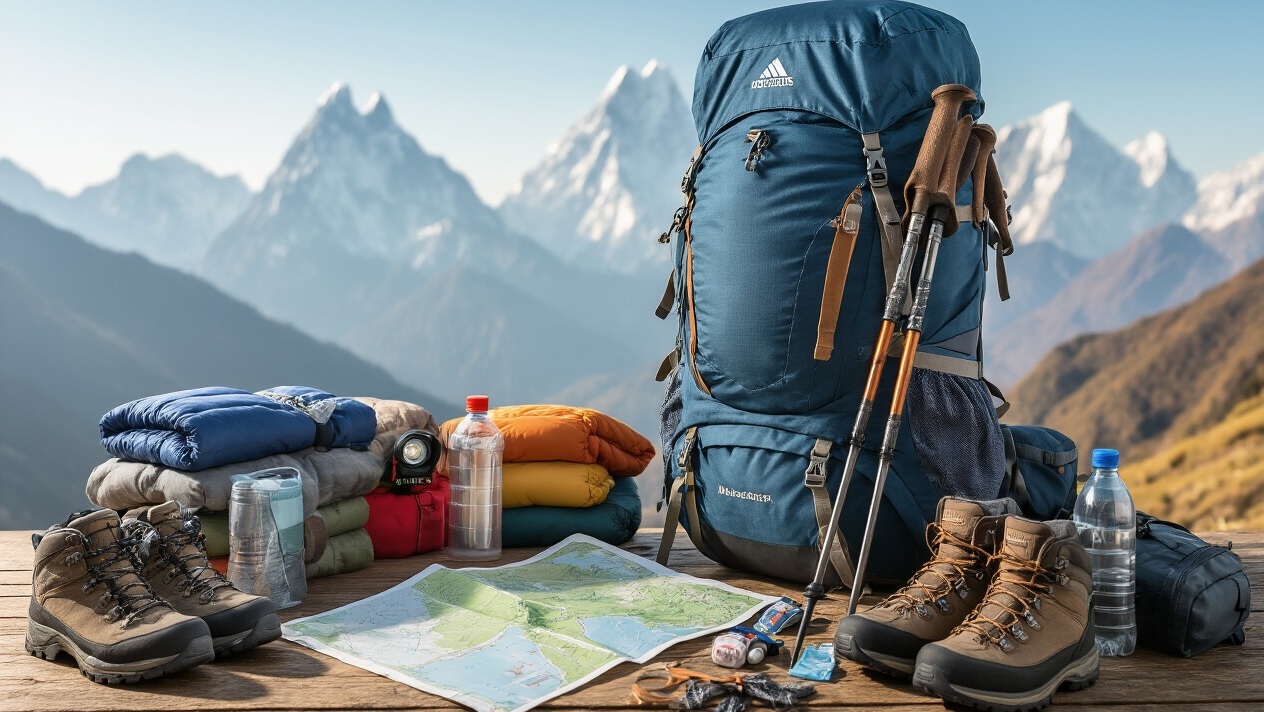
Essential Clothing and Layering Systems for Mountain Weather
Our layering system forms the foundation of comfort and safety during Nepal's unpredictable mountain weather. We recommend starting with moisture-wicking base layers made from merino wool or synthetic materials that pull sweat away from your skin. These materials maintain their insulating properties even when damp, which becomes critical during strenuous climbs.
For the insulation layer, we prefer lightweight down jackets or synthetic insulation pieces that compress well in your pack. Down offers superior warmth-to-weight ratio in dry conditions, while synthetic insulation continues to provide warmth when wet. We always pack both options for maximum versatility across different altitudes and weather patterns.
Our outer shell layer protects against wind, rain, and snow. We choose jackets with full-zip ventilation, adjustable hoods, and pit zips for temperature regulation. Look for Gore-Tex or similar waterproof-breathable fabrics that allow moisture vapor to escape while keeping precipitation out.
For lower body protection, we pack waterproof trekking pants and insulated pants for higher elevations. Convertible trekking pants that zip into shorts provide excellent versatility for changing conditions throughout the day.
Essential clothing items we never leave behind include:
-
3-4 moisture-wicking base layer tops
-
2 insulation layers (fleece and down)
-
Waterproof shell jacket and pants
-
Warm hat and sun hat
-
Insulated gloves and liner gloves
-
Buff or neck gaiter for wind protection
Professional Trekking Boots and Footwear Selection
Our footwear selection directly impacts trekking success and comfort across Nepal's diverse terrain. We prioritize boots with ankle support, waterproof membranes, and aggressive tread patterns designed for rocky, muddy, and icy conditions.
For most Nepal treks, we recommend full leather or leather-synthetic hybrid boots that provide durability and weather protection. These boots should fit comfortably with thick hiking socks, allowing space for toe movement without causing heel lift. We always break in new boots for at least 50 miles before departure to prevent painful blisters during critical trekking days.
Boot features we consider essential include:
-
Waterproof-breathable membrane (Gore-Tex or similar)
-
Vibram or equivalent high-traction outsole
-
Full ankle support with padded collar
-
Crampon-compatible sole for high-altitude routes
-
Removable insole for custom orthotics if needed
We pack backup footwear for camp comfort and stream crossings. Lightweight trekking sandals or camp shoes allow our feet to breathe and recover after long hiking days. For high-altitude treks above 4,000 meters, we bring insulated mountain boots rated for extreme cold conditions.
Sock selection deserves equal attention. We pack merino wool hiking socks in various thicknesses, plus liner socks to reduce friction and hot spots. Extra socks serve as backup warmth layers for hands during emergencies.
Technical Equipment and Safety Gear Requirements
Our technical equipment list varies based on trek difficulty and seasonal conditions, but certain safety items remain non-negotiable for any Nepal adventure. We start with navigation tools including detailed topographic maps, compass, and GPS device with extra batteries. Digital devices can fail in extreme cold, making analog backups essential.
Altitude-related gear becomes critical above 3,000 meters. We carry pulse oximeters to monitor blood oxygen levels and recognize altitude sickness symptoms early. Diamox or other altitude medications should be discussed with doctors before departure.
Communication equipment includes satellite communicators or personal locator beacons for emergency rescue coordination. Cell phone coverage exists in many trekking areas, but we never rely solely on cellular networks for emergency situations.
Our essential technical gear includes:
|
Equipment Category |
Essential Items |
|
Navigation |
Topographic maps, compass, GPS device |
|
Safety |
First aid kit, emergency shelter, whistle |
|
Illumination |
Headlamp with extra batteries, backup light |
|
Water Treatment |
Purification tablets, UV sterilizer, filters |
|
Weather Protection |
Emergency bivy, space blanket |
We pack comprehensive first aid supplies including blister treatment, pain relievers, anti-diarrheal medication, and any personal prescription medications. Altitude sickness medications and antibiotics require medical consultation before travel.
Luxury Comfort Items for Enhanced Trekking Experience
Our luxury comfort items transform basic trekking into memorable experiences without compromising pack weight or safety. We select high-quality gear that serves multiple purposes while adding genuine comfort during challenging days.
Premium sleeping systems make enormous differences in recovery quality. We invest in high-fill-power down sleeping bags rated well below expected temperatures, paired with closed-cell foam pads and inflatable sleeping pads for maximum comfort and insulation from cold ground.
Portable comfort items we always pack include:
-
Lightweight camp chairs for relaxation
-
Solar power banks for device charging
-
Premium coffee or tea supplies
-
Comfortable camp clothing for evenings
-
Quality toiletries and personal care items
We bring portable camp showers or wet wipes for personal hygiene maintenance during longer treks. Small luxury food items like energy bars, nuts, or favorite snacks boost morale during difficult days.
Photography equipment deserves special consideration. We pack weather-sealed cameras with extra batteries, memory cards, and protective cases. Lightweight tripods enable better landscape photography and group photos.
Entertainment options include e-readers loaded with books, playing cards, or journal supplies for documenting trek experiences. These items weigh little but provide significant psychological comfort during rest days or weather delays.
Quality matters more than quantity for luxury items. We choose multi-functional pieces that enhance comfort without adding unnecessary weight to our packs.
Fitness Preparation and Training Strategies
Building Cardiovascular Endurance for High Altitude
We can't stress enough how important cardiovascular fitness is when preparing for Nepal's challenging treks. At Luxury Holiday Nepal, we've seen countless trekkers struggle simply because they underestimated the physical demands of walking at altitude for hours each day.
Starting your cardio training at least 8-12 weeks before your trek gives your body time to adapt. We recommend mixing different types of cardio exercises to build well-rounded endurance. Running remains our top choice because it mimics the impact and muscle engagement you'll experience on rocky trails. Start with 20-30 minute runs and gradually increase to 45-60 minutes.
Hiking with a loaded backpack becomes your best friend during preparation. We suggest adding weight incrementally - start with 10-15 pounds and work up to your expected trek weight. Find local hills or use a stair climber to simulate elevation gain. Weekend hikes lasting 4-6 hours help build the specific endurance you'll need for long trekking days.
Swimming offers excellent low-impact cardio that strengthens your lungs without stressing joints. Cycling, especially on hills, builds leg strength while improving cardiovascular capacity. We've found that interval training - alternating between high and low intensity - particularly effective for preparing your heart for altitude changes.
Don't forget about consistency. We always tell our clients that three moderate workouts per week beat one intense session. Your heart needs regular training to pump efficiently in Nepal's thin air, where oxygen levels can drop to 50% of sea level values.
Strength Training Exercises for Trekking Success
We believe strength training forms the backbone of successful trekking preparation. Your legs, core, and stabilizing muscles need to handle steep ascents, rocky descents, and uneven terrain for days on end. We've developed a comprehensive strength program that targets the specific muscle groups you'll rely on most.
Lower Body Focus
Squats and lunges top our exercise list because they mirror trekking movements perfectly. We recommend bodyweight versions initially, progressing to weighted variations. Single-leg exercises like step-ups and Bulgarian split squats build the unilateral strength needed for navigating uneven trails.
Calf raises become crucial for steep climbs and descents. We suggest doing them on steps to achieve full range of motion. Wall sits build the muscular endurance needed for long descents when your quads take a beating.
Core and Stability Training
We can't overlook core strength when carrying a heavy pack for hours. Planks, side planks, and dead bugs strengthen your entire midsection. Russian twists and mountain climbers add rotational strength that helps with balance on narrow trails.
Balance exercises like single-leg stands on unstable surfaces prepare you for loose rocks and stream crossings. We use balance boards and wobble cushions to challenge proprioception.
Upper Body and Back
Your back and shoulders carry your pack's weight, so we focus on rows, lat pulldowns, and shoulder blade squeezes. Farmer's walks with heavy weights simulate carrying gear while strengthening grip strength.
We recommend training 2-3 times per week, focusing on functional movements rather than isolated muscle groups. Circuit training works well because it combines strength building with cardiovascular benefits.
Acclimatization Techniques and Altitude Sickness Prevention
We take altitude sickness seriously because it can turn a dream trek into a dangerous situation. Understanding how your body responds to decreased oxygen levels helps us prepare you for Nepal's high-altitude environment.
Pre-Trek Acclimatization Strategies
We recommend arriving in Kathmandu 2-3 days before your trek begins. This gives your body time to start adjusting to the 4,600-foot elevation. During these days, we encourage light walking and staying hydrated while avoiding alcohol.
Breathing exercises become powerful tools for altitude preparation. We teach diaphragmatic breathing techniques that maximize oxygen uptake. Practice breathing deeply and slowly - this becomes second nature when oxygen gets scarce.
On-Trek Acclimatization Protocol
We follow the golden rule: "climb high, sleep low." Our itineraries include rest days and gradual elevation gain. We never ascend more than 1,600 feet per day above 8,000 feet, and we build in acclimatization days every 3,000 feet of elevation gain.
Hydration plays a massive role in preventing altitude sickness. We recommend drinking 3-4 liters of water daily at altitude. Clear urine indicates proper hydration levels.
Recognizing Warning Signs
We train our guides and clients to recognize altitude sickness symptoms: headaches, nausea, dizziness, fatigue, and sleep disturbances. Mild symptoms often resolve with rest and hydration, but we never ignore worsening conditions.
Prevention Medications
We discuss acetazolamide (Diamox) with clients who have altitude sensitivity. This medication helps your body acclimatize faster, but we always recommend consulting your doctor before taking any medication.
Sleep quality drops at altitude, so we prepare clients for restless nights. Avoiding sedatives and alcohol helps maintain natural breathing patterns during sleep when oxygen saturation naturally decreases.
Accommodation and Dining Options During Treks
Luxury Lodge Networks and Premium Tea House Stays
We've carefully curated partnerships with Nepal's most prestigious lodge networks to ensure our trekkers experience unparalleled comfort in the mountains. Our preferred luxury accommodations include Everest Summit Lodges on the Everest Base Camp route, which feature heated rooms, attached bathrooms, and breathtaking panoramic views. These premium properties offer amenities rarely found at altitude, including Wi-Fi connectivity, charging stations, and even hot showers powered by solar energy systems.
We also work closely with Mountain Lodges of Nepal, whose properties along the Annapurna Circuit provide authentic yet comfortable experiences. Each lodge maintains traditional architectural elements while incorporating modern conveniences. Guests can expect cozy common areas with fireplaces, well-appointed dining rooms serving international cuisine, and private rooms with quality bedding and mountain views.
Our tea house partnerships extend beyond the standard trail accommodations. We've identified family-run establishments that offer exceptional hospitality and maintain higher cleanliness standards. These carefully selected tea houses provide comfortable beds with thick blankets, clean shared facilities, and hearty meals prepared with fresh, local ingredients. We regularly inspect our partner accommodations to ensure they meet our quality standards, and we maintain backup options along each route should weather or other circumstances require alternative arrangements.
Traditional Local Cuisine and Nutritional Requirements
We believe trekking cuisine should fuel your adventure while introducing you to authentic Nepalese flavors. Our meal plans center around traditional staples like dal bhat, Nepal's national dish combining lentil soup, steamed rice, and vegetable curry. This nutritionally balanced meal provides the complex carbohydrates and proteins needed for sustained energy during long trekking days.
We ensure our trekkers experience momos, Tibet-influenced dumplings filled with vegetables or meat, often served steaming hot with spicy dipping sauce. Our lodge partners prepare fresh naan bread, fried rice variations, and hearty noodle soups that warm you after challenging ascents. We've also arranged for special treats like sel roti, traditional ring-shaped rice donuts often enjoyed during festivals.
Our nutritional approach focuses on maintaining energy levels throughout your trek. We schedule meal timing to optimize performance, with early morning breakfasts providing sustained energy for the day's challenges. Hot beverages play a crucial role - we serve traditional butter tea, masala chai, and locally grown coffee to maintain hydration and provide comfort.
Our guides work with lodge owners to ensure meal portions match your energy expenditure. Higher altitude locations require increased caloric intake, and we adjust serving sizes accordingly. We also emphasize fresh vegetables when available, supporting both nutrition and local farming communities along the trail.
Special Dietary Accommodations and Food Safety
We understand dietary restrictions shouldn't limit your trekking dreams. Our team coordinates with lodge partners to accommodate vegetarian, vegan, gluten-free, and other special dietary needs. We carry detailed dietary requirement cards in Nepali and English to communicate your needs clearly to local cooks and lodge owners.
For vegetarian trekkers, we ensure protein-rich alternatives like paneer dishes, egg preparations, and legume-based meals. Vegan options include fresh vegetables, rice dishes, and traditional preparations using mustard oil instead of dairy products. We maintain relationships with lodges that understand these requirements and can prepare meals without cross-contamination.
Our food safety protocols begin before your trek starts. We brief all participants on safe eating practices, including avoiding raw vegetables at higher altitudes, drinking only boiled or treated water, and recognizing signs of food-related illness. We carry water purification tablets and portable filtration systems as backup options.
We monitor food preparation standards at our partner establishments regularly. Our guides inspect kitchen facilities, observe food handling practices, and maintain communication with lodge owners about hygiene standards. We also carry basic medications for digestive issues and work with local medical facilities when needed.
Our team maintains updated lists of safe eating establishments and alternative dining options along each route. We prepare contingency meal plans for areas with limited options and carry emergency food supplies for unexpected situations. This comprehensive approach ensures your dietary needs are met safely throughout your mountain adventure.
Cultural Immersion and Local Experiences
Interacting Respectfully with Sherpa and Local Communities
We believe that authentic cultural exchange happens when we approach local communities with genuine respect and curiosity. When we trek through Nepal's mountain villages, we're walking through people's homes and sacred spaces. We make sure to learn basic Nepali phrases like "Namaste" and "Dhanyabad" (thank you) before we arrive. These small efforts create instant smiles and open doors to meaningful conversations.
We always ask permission before photographing people, especially children and elderly community members. Many locals are happy to share their stories, but we respect those who prefer privacy. When we visit someone's home, we remove our shoes and wait to be invited inside. We bring small gifts from our home countries – nothing expensive, just tokens of friendship that show we value the connection.
During our interactions, we listen more than we speak. The mountain communities have incredible wisdom about living sustainably and finding happiness with less. We've learned that offering to help with daily tasks like carrying water or sorting crops creates bonds that last far beyond our trek. When we hire local porters and guides, we treat them as partners, not servants, sharing meals and including them in our journey's memorable moments.
Visiting Ancient Monasteries and Sacred Sites
Our monastery visits require careful preparation and deep respect. We dress modestly, covering shoulders and legs, and we always ask the monks for permission before entering prayer halls. Many monasteries welcome visitors during specific hours, but we never interrupt ongoing ceremonies or prayer sessions.
We participate quietly in monastery rituals when invited, following the lead of local devotees. The spinning of prayer wheels, lighting butter lamps, and walking clockwise around sacred structures all carry spiritual significance. We contribute to monastery upkeep through donations, understanding that these contributions help preserve centuries-old traditions.
At sacred sites like Tengboche and Rongbuk monasteries, we witness morning and evening prayer sessions that have remained unchanged for generations. The chanting, horn blowing, and ritual drumming create atmospheres of profound peace. We sit quietly in designated areas, absorbing the spiritual energy without disturbing the practitioners.
Many monasteries house ancient artifacts, manuscripts, and artwork that tell stories of Buddhist history in the Himalayas. We ask knowledgeable monks to explain the significance of different statues and paintings, learning about Buddhist philosophy through these visual teachings.
Understanding Buddhist Culture and Mountain Traditions
Buddhist philosophy permeates every aspect of mountain life, and we immerse ourselves in understanding these principles during our treks. The concept of "Compassion for all beings" extends to how locals treat animals, strangers, and even the mountains themselves. We observe how this philosophy shapes daily decisions and community relationships.
Prayer flags flutter everywhere in the mountains, each color representing different elements – blue for sky, white for air, red for fire, green for water, and yellow for earth. We learn that these flags carry prayers and mantras into the wind, spreading positive energy throughout the region. When we see worn flags, we understand they've fulfilled their purpose and shouldn't be replaced carelessly.
Mountain communities follow lunar calendars for festivals and important events. We time our treks to coincide with celebrations like Losar (Tibetan New Year) or local harvest festivals. These experiences show us how communities come together, sharing food, dancing, and reinforcing cultural bonds.
The practice of "Sky burial" and other death rituals reflects Buddhist beliefs about impermanence and rebirth. While we don't witness these private ceremonies, understanding their significance helps us appreciate the deeper spiritual relationship mountain people have with life and death cycles.
Supporting Sustainable Tourism and Local Economy
We choose locally-owned tea houses and lodges over international chains, ensuring our spending directly benefits mountain communities. When we buy souvenirs, we purchase from local artisans rather than mass-produced items shipped from distant cities. These choices multiply throughout our trek, creating significant economic impact.
Our approach includes hiring local guides and porters from the communities we're visiting, not just from Kathmandu agencies. This practice distributes tourism income more evenly across different villages and ethnic groups. We pay fair wages and provide proper equipment for our local staff, treating them as valued team members.
We practice "Leave No Trace" principles religiously, but we go beyond basic environmental protection. We carry out more trash than we bring in, participate in community cleanup efforts, and educate other trekkers about responsible practices. When we see plastic bottles or food waste on trails, we collect them for proper disposal.
Supporting local schools, health clinics, and infrastructure projects becomes part of our trekking experience. We research community needs before arriving and bring useful supplies like books, medical equipment, or school materials. These contributions create lasting positive impacts long after we return home.
We choose trekking companies that demonstrate genuine commitment to sustainability and community development. We look for operators who provide transparent information about how they support local communities and protect the environment. Our trekking dollars become votes for responsible tourism practices that preserve Nepal's natural beauty and cultural heritage for future generations.
Safety Protocols and Emergency Preparedness
Professional Guide Services and Porter Arrangements
When we organize trekking expeditions in Nepal, we always emphasize the critical importance of working with certified and experienced guides. Our team carefully vets every guide to ensure they hold proper licenses from the Nepal Mountaineering Association (NMA) and have extensive training in first aid, altitude sickness recognition, and emergency response procedures.
We assign guides based on their specific expertise with different trekking routes. For instance, our Everest Base Camp guides have completed the trek dozens of times and know every teahouse, acclimatization point, and potential risk area along the way. This intimate knowledge becomes invaluable when weather conditions change suddenly or when trekkers experience altitude-related issues.
Our porter arrangements follow strict ethical guidelines. We ensure all porters carry maximum loads of 30 kilograms (including their personal gear), receive proper footwear and clothing for high-altitude conditions, and have access to the same accommodation and meals as trekkers. We also provide insurance coverage for all our porters and maintain regular health check-ups during longer expeditions.
We establish clear communication protocols between guides, porters, and our base operations team. Each guide carries satellite communication devices and knows exactly when to check in with our headquarters. This systematic approach allows us to monitor every group's progress and provide immediate assistance when needed.
Communication Systems and Emergency Evacuation Plans
We equip every trekking group with multiple communication systems to ensure constant connectivity with our emergency response team. Our guides carry satellite phones that work reliably even in remote areas like the Annapurna Circuit's Thorong La Pass or the isolated valleys of Upper Mustang.
Each guide also has a GPS tracking device that automatically sends location updates to our monitoring center every few hours. We can track groups in real-time and identify if anyone has deviated from planned routes or stopped moving for extended periods. This technology has proven essential during unexpected weather events when groups need to find alternative shelter or change routes quickly.
Our emergency evacuation plans cover different scenarios based on severity levels. For minor injuries or mild altitude sickness, we have protocols for safe descent with guide assistance and access to medical posts along major trekking routes. We maintain relationships with helicopter rescue services throughout Nepal, including Simrik Air and Altitude Air, ensuring rapid response for serious emergencies.
We've established evacuation points at specific locations along each trekking route where helicopters can safely land. Our guides memorize these coordinates and carry detailed maps marking the nearest evacuation sites from any point on the trek. During monsoon season or winter months when helicopter rescues become challenging, we have backup ground evacuation plans using yaks or porters to transport injured trekkers to lower elevations.
We also coordinate with medical facilities in Kathmandu, Pokhara, and other major towns to ensure beds are available for evacuated trekkers. Our emergency response team includes a doctor who can provide remote medical consultation via satellite phone and advise on whether immediate evacuation is necessary.
Travel Insurance Requirements for High-Altitude Trekking
We strongly recommend that all our trekkers purchase comprehensive travel insurance that specifically covers high-altitude trekking activities. Standard travel insurance policies often exclude coverage for activities above certain elevations, typically around 3,000 to 4,000 meters, which means most of Nepal's popular trekking routes wouldn't be covered.
Our preferred insurance providers include World Nomads, Global Rescue, and IMG, as they offer policies that cover trekking up to 6,000 meters and include helicopter evacuation coverage. We've worked with these companies extensively and know their claims processes work smoothly for Nepal-based emergencies.
The insurance must include specific coverage for helicopter rescue and evacuation, which can cost between $5,000 to $15,000 depending on location and weather conditions. We've seen cases where inadequate insurance led to trekkers facing enormous bills for emergency services, so we always verify coverage details before groups depart.
We also recommend policies that cover trip cancellation and interruption due to altitude sickness, as this is one of the most common reasons trekkers need to abandon their planned itinerary. Some insurance companies require medical certificates or fitness assessments for high-altitude coverage, so we advise booking insurance well in advance of travel dates.
Medical coverage should include treatment for altitude-related illnesses, hypothermia, and other mountain-specific conditions. We provide all our trekkers with a detailed list of insurance requirements and help them understand exactly what their policies cover before they begin their adventure with us.
Nepal's trekking landscape offers us unparalleled adventures, from the towering peaks of the Himalayas to the warm hospitality of mountain communities. We've covered the essential elements that make for a successful trek - proper planning sets the foundation, while choosing the right route matches our adventure goals with our abilities. Our gear selections and fitness preparation directly impact our comfort and safety on the trails, and understanding accommodation options helps us plan realistic itineraries.
The cultural connections we make along these ancient paths often become the most treasured memories of our journey. Local teahouses provide not just shelter and meals, but windows into mountain life that has remained largely unchanged for generations. By prioritizing safety protocols and emergency preparedness, we can focus on soaking in the breathtaking landscapes and meaningful encounters that await us. Whether we're dreaming of reaching Everest Base Camp or exploring the hidden valleys of Annapurna, Nepal's trails are calling - and with proper preparation, we're ready to answer that call and create the adventure of a lifetime.
If you need any further information, please contact us by email: at [email protected], Phone: at +977- 985 100 5129 (WhatsApp)
#Tags
Tripadvisor
5.0910 reviewsGoogle
4.8110 reviewsFacebook
4.1 recommend44 ReviewsTrustpilot
4.1 Great(5 reviews)- Trusted by50K plus traveller

